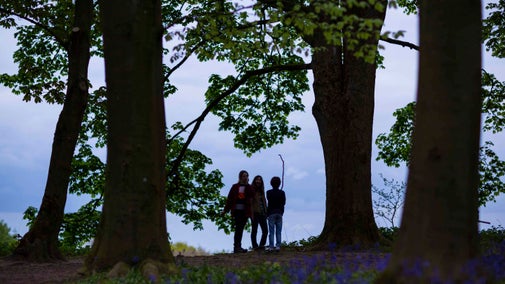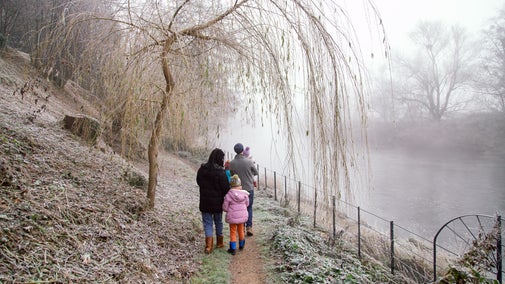Badbury short woodland walk (pink route)
Oxfordshire, Buckinghamshire & Berkshire
Enjoy a short walk through the National Trust woodlands close to Badbury Hill, near Coleshill in Oxfordshire. Here you will see a large Iron Age hillfort, which in the Dark Ages may have been a key battle site between ancient Celtic people of Britain and the encroaching Anglo-Saxons. Legend has it that King Arthur himself led the Celtic British to victory here. You will also see an almost forgotten firing range, used to prepare Britain's secret resistance fighters for invasion during the Second World War. Please note: the walk is waymarked with pink arrows mounted on wooden posts at all major path junctions.
Near to
BadburyStart point
Badbury Hill car park, grid ref: SU262946Trail information
More near here
Green walk: Cuckoo Pen
Try this walk for a flat walk along lanes, footpaths through fields and parkland and farm tracks. Delve into the family history of the village's former first family, the Pleydell-Bouverie's, and catch a glimpse of its secret Second World War past.

Orange walk: Badbury and Great Coxwell Barn
Take a gentle circular walk along the orange route on the Coleshill Estate from Badbury to Great Coxwell Barn to spot wildlife and wander through two picturesque working farms.

Red walk: Coleshill
Coleshill's red walk is a great way to get some gentle exercise, starting at the estate yard, formerly a Victorian model farm, then onto a 'Capability' Brown-style 18th century parkland.

Get in touch
Our partners

We’ve partnered with Cotswold Outdoor to help everyone make the most of their time outdoors in the places we care for.
You might also be interested in
Walking
Explore some of the finest landscapes in our care on coastal paths, accessible trails, woodland walks and everything in between. Find the best places to walk near you.

Things to see and do at Badbury
Whether on a solitary walk or visiting with friends and family, find out what wildlife and historical features you can spot at Badbury and how to try some calming forest bathing.

Walking in Oxfordshire, Buckinghamshire and Berkshire
From gentle strolls for little legs to longer hikes through the rolling Chiltern hills, these are some of the best walks in Oxfordshire, Buckinghamshire and Berkshire.

Staying safe at National Trust places
The special places in National Trust care sometimes come with a few risks for visitors, be it coastline or countryside. Find out how to keep safe throughout your visits.

Follow the Countryside Code
Help to look after National Trust places by observing a few simple guidelines during your visit and following the Countryside Code.

Cotswold Outdoor: our exclusive walking partner
Learn about the National Trust’s ongoing partnership with Cotswold Outdoor. Find out how they help us care for precious places and the exclusive discount available for National Trust supporters.



